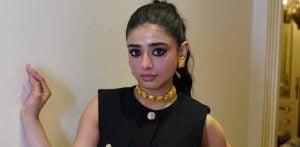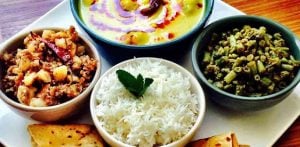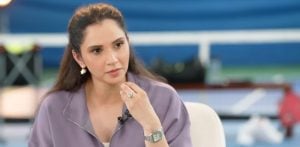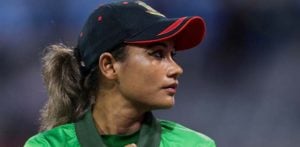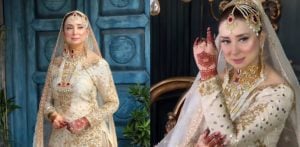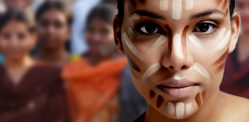"I love our little blended family.”
Blended families, also known as step-families, combine children from previous marriages or relationships. This family structure is a common family type globally.
In 2021, an estimated one in three families in the UK were described as “blended”.
Due to divorce, relationships ending or widowhood, Desi individuals can find themselves remarried or in a new committed relationship, thus resulting in the emergence of blended families.
Within South Asian cultures, the family is considered important, almost sacred. The idea of family and togetherness remains strong.
Remarriage and divorce are still frowned upon to varying degrees.
Amina*, a 40-year-old British Pakistani, had two daughters from her first marriage while her husband had a son from his first marriage.
She stated: “When I remarried after two years of divorcing, eyebrows in the family and community went up, especially as I had kids.
“Divorce and remarriage when you have kids for women is still questioned.
“The gossip, judgment and challenges were all worth it. I love our little blended family.”
The unique dynamics of blended families present both opportunities and challenges.
DESIblitz explores the experiences of British Asians from Pakistani, Bangladeshi, and Indian backgrounds within blended families.
The Role of Communication for Adults in Blended Families

Effective communication is essential for blended families; it can prevent misunderstandings and build trust.
Taybah*, a 45-year-old British Bangladeshi, remarried at 33. She had a six-year-old daughter from her previous marriage while her new husband had a 10-year-old son.
For Taybah, honesty and clear rules were vital when she remarried:
“Before my husband and I were officially engaged, we had very honest, emotionally intense and draining conversations.
“We wanted to ensure we did everything to make sure we were clear on our roles with each other’s little ones.
“It was key that we discussed the issues we might face, including with our ex-partners.
“We had no choice; our marriage was not just about us, but also our children. Neither of us wanted to risk them being emotionally hurt.
Explaining that intensive talks were vital, she continued:
“Despite the headaches we both got, I’m glad we did what we did.
“When we married, we realised that we hadn’t been able to see all issues that would pop up.”
“But because of our conversations, we were united and had a general plan, so the children never saw us confused or on shaky ground.”
Trust is the foundation of any relationship.
Building trust in blended families involves patience, consistency, and honesty.
It’s crucial for new family members to feel accepted and valued.
Taybah highlighted: “We took time for both children to get used to us and each other. It was tricky, but it worked.
“Once engaged, we included the little ones in all we could, so they felt they belonged.
“After the nikkah, we didn’t move straightaway; luckily, we could afford to do that. We did sleepovers that gradually got longer and longer.”
Children may struggle with changes in family structure. Supporting children through this transition is critical.
Open communication, reassurance, and patience can help them adapt.
The Role of Communication with Children in Blended Families

Communication with children in blended families is crucial.
Multiple studies consistently find that children thrive in environments where their voices are acknowledged and respected.
Minaz* a 24-year-old British Pakistani, was 12 years old when her mother remarried, and she found herself with two step-siblings and, a year later, a baby sister:
“Ammi getting married was kinda hard.
“It had been me and her for as long as I can remember. I wasn’t a mess because she kept me in the loop.
“She asked my opinions and feelings. Ammi and my stepdad spoke to me and my siblings. And we spoke to each other.
“If I had said no, she wouldn’t have gotten remarried.”
Children feel more secure and valued when they are heard. Effective communication supports emotional and mental well-being. It helps children navigate the complexities of blended family life.
Raj*, a 26-year-old British Indian, found himself becoming part of a blended family at the age of 16. His father remarried five years after the death of his wife:
“My dad blindsided us. It was like, ‘I’ve decided to marry and found someone’. Then, five minutes later, he was married.
“My youngest brother was 11, and Dad just threw the news at us.
“When dad’s wife first moved in with her [five-year-old] son, it was awkward. Tension was high, we didn’t know them, and the same for them.
“My little brother was angry. Dad, without thinking, suggested he call her mum. It was a s*** show.
“If my family didn’t step in and force conversations, it would have been a mess we couldn’t fix.”
Raj’s extended family was an important support framework for him and his siblings.
Good communication helps in adjusting to new family dynamics, prevents misunderstandings and conflicts, and ensures conflicts do not damage relationships.
Addressing Conflicts in Blended Families

Conflict is natural in any family but can be more pronounced in blended families. Resolving conflicts quickly and fairly is crucial.
There is the option of family therapy and mediation when conflicts become pronounced. However, it remains taboo in Desi communities.
Members of the extended family can often act as mediators. Indeed, this was the case for Raj and his blended family:
“The amount of arguments and tension was seriously bad.”
“The neighbours got free entertainment.
“At one point, we were going to go live with one of my uncles for a bit. But the older uncles and aunties thought it was a bad idea.
“They talked to us together tons of times. And talked to Dad and his wife alone tons. It took a solid year for things to calm.
“Now we’re good, but no one ever called her mum. Adam* [stepbrother] is my baby brother. I don’t see any difference, and he doesn’t. None of the others do either.”
For Minaz, the fact her mum and stepfather never seemed to favour one child over the other in conflicts was important:
“There were times we all tested the boundaries with Ammi and my stepdad. They kept cool though, and never took a side.
“Even when we were angry, we knew they were being fair; it was so annoying at the time.
“My stepdad never favoured my sisters – his blood-related kids over me, and mum didn’t either. We felt equal.”
Minaz made it clear that a sense of equality and fairness in the treatment of children is important. It helps create a positive environment within the household and builds trust.
Cultural Dynamics in Desi Families

Desi cultures emphasise strong family bonds and at times, traditional values.
Blended families in these cultures sometimes have to navigate traditional expectations and new family dynamics.
New family members must adapt to established traditions and expectations while being open to changing and creating new ones.
For Desi blended families, grandparents and extended family matter.
Elders often play a significant role in influencing family harmony.
When Amina became a part of her blended family, it was not just children from two households coming together:
“My mother-in-law lived with my husband, she did so in his first marriage, and after the wife left, she helped with the kids.
“My husband made it clear from the start that she wouldn’t be going anywhere, and I admired him for it.
“And my children and her had to develop a relationship, and me and her too.
“Then there were my kid’s grandparents. My kids had nothing to do with their dad. I was determined their grandparents wouldn’t miss out because their son was an idiot.
“Similar with my husband’s side of things. And it was the same for my stepson and me and him and my family.
“It was a lot of work, especially since some of my family, really thought it was a bad idea I was remarrying when I had two young girls.
“Now, you wouldn’t know that some were unhappy. Eid and weddings are fun.
“It was a bit of trial and error, but only us adults knew. There were things we were all used to doing in our own way.
“We had to make an effort to accept some things and change others to fit our new family.”
Family relationships can be complex; adults need to be willing to change and compromise within blended families.
The nature of Desi families means that family relationships outside the household can matter and play a role.
Desi Blended Families as a Gift
South Asian blended families create challenges and unique opportunities. The nature of Desi extended families means that it is not just two households that are merged.
Amina stressed: “I was scared it wouldn’t work, but I’m so glad I didn’t let it stop me.
“I gained a child I love, my girls gained a sibling and a father, and everyone gained more family.
“Yes, there were plenty of teething problems at the start, but that was mainly thanks to the adults.
“The gift I have now, this family, I would never give up.”
There can be misconceptions about blended families and their impact on children.
UK research found children from stable homes, regardless of family structure, were equally successful academically due to family stability.
Accordingly, establishing a positive environment is more important than family type.
Cooperative parents, trust, honesty, communication, and support from extended family can ensure Desi blended families thrive.













